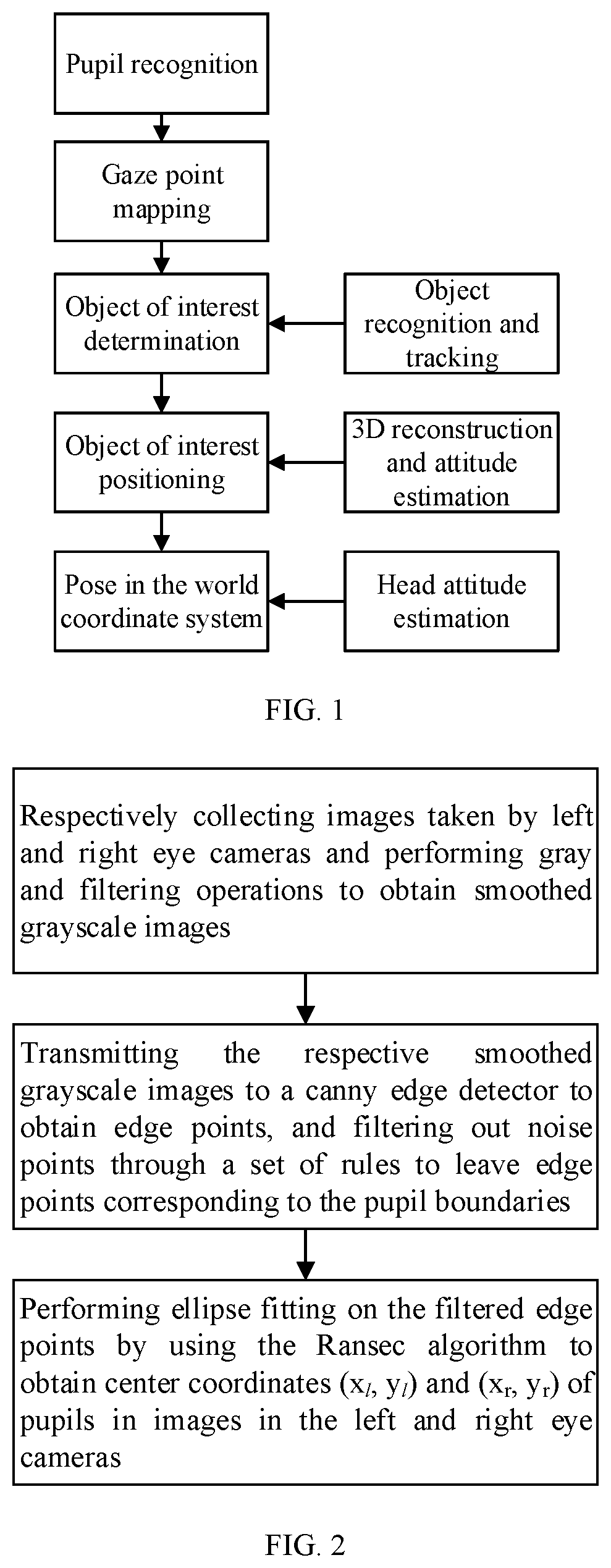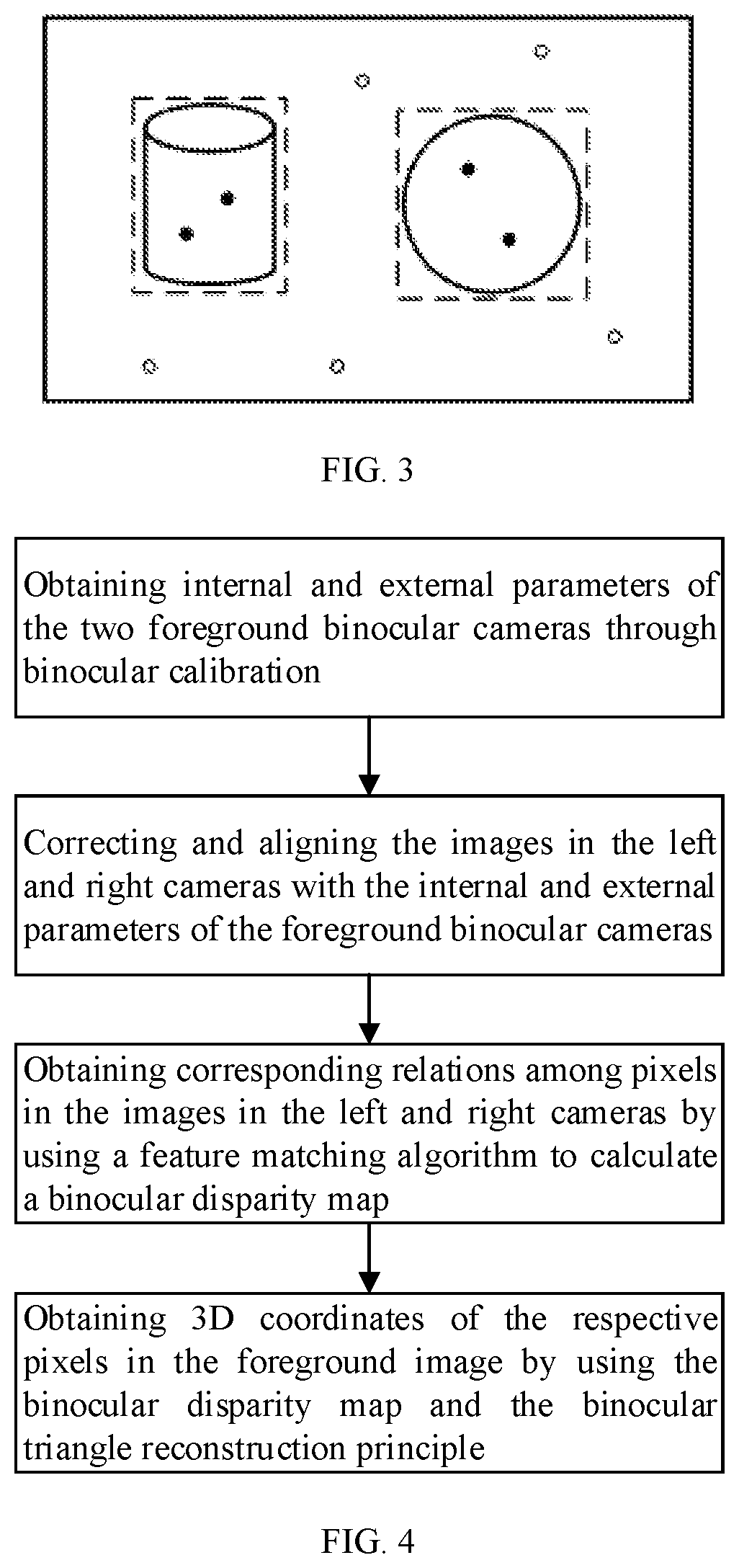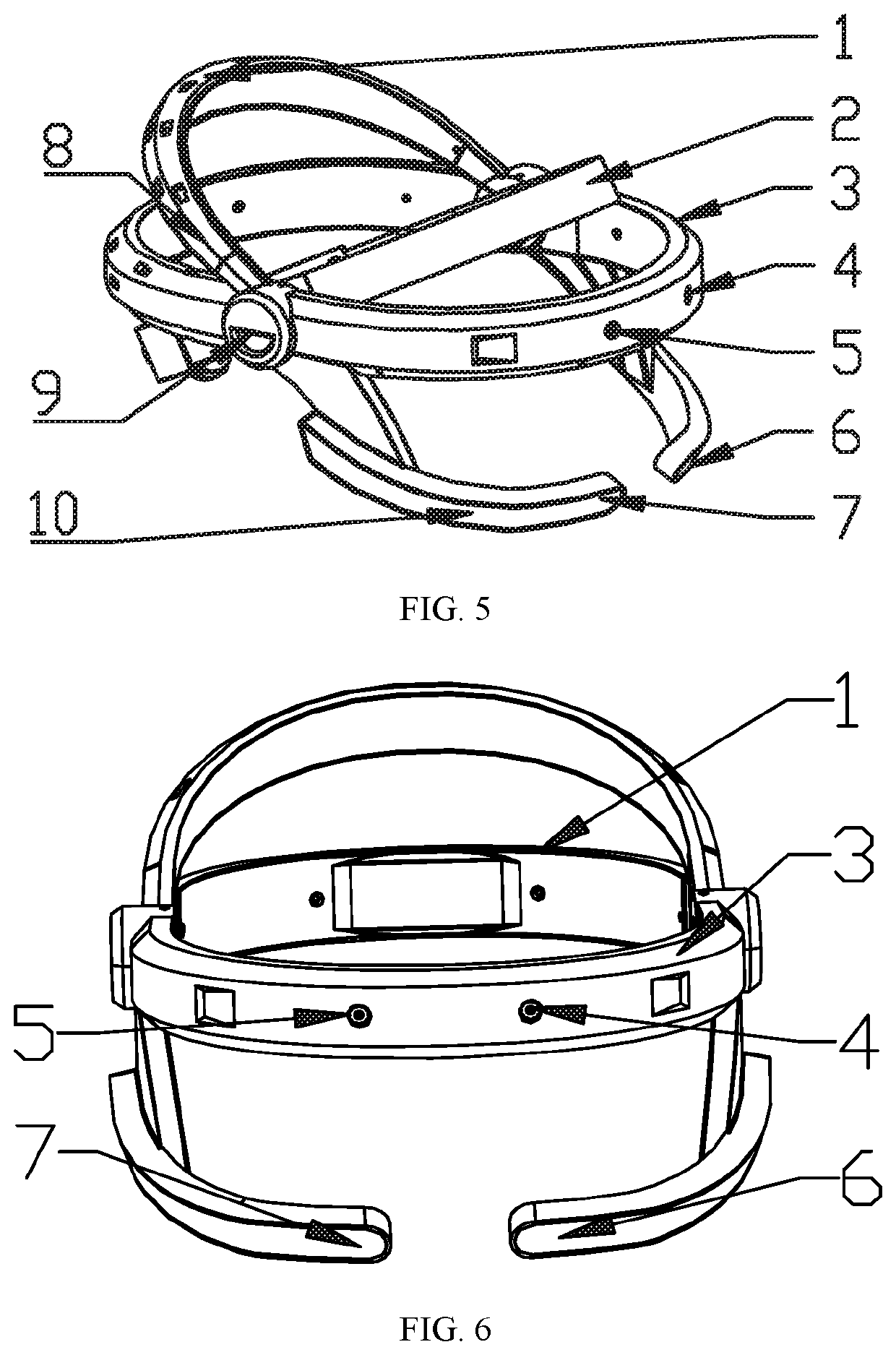Pose recognition method, device and system for an object of interest to human eyes
a recognition method and human eye technology, applied in the field of 3d gaze point recognition and computer vision, can solve the problems of user's head being fixed, difficult to use in a real-life scenario, and the amount of information extracted is limited, so as to facilitate the disabled, widen the usage scenario, and improve the comfort of us
- Summary
- Abstract
- Description
- Claims
- Application Information
AI Technical Summary
Benefits of technology
Problems solved by technology
Method used
Image
Examples
Embodiment Construction
lass="d_n">[0069]For clear understanding of the objectives, features and advantages of the present disclosure, detailed description of the present disclosure will be given below in conjunction with accompanying drawings and specific embodiments. It should be noted that the embodiments described herein are only meant to explain the present disclosure, and not to limit the scope of the present disclosure. Furthermore, the technical features related to the embodiments of the present disclosure described below can be mutually combined if they are not found to be mutually exclusive.
[0070]As shown in FIG. 1, a pose recognition method for an object of interest to human eyes according to the embodiments of the present disclosure includes following steps:
[0071]S1 pupil recognition: respectively identify centers of left and right pupils of a user by using a left eye camera 6 and a right eye camera 7 on an eye tracker to extract information of the user's eyes;
[0072]S2 gaze point mapping: mappi...
PUM
 Login to View More
Login to View More Abstract
Description
Claims
Application Information
 Login to View More
Login to View More - R&D
- Intellectual Property
- Life Sciences
- Materials
- Tech Scout
- Unparalleled Data Quality
- Higher Quality Content
- 60% Fewer Hallucinations
Browse by: Latest US Patents, China's latest patents, Technical Efficacy Thesaurus, Application Domain, Technology Topic, Popular Technical Reports.
© 2025 PatSnap. All rights reserved.Legal|Privacy policy|Modern Slavery Act Transparency Statement|Sitemap|About US| Contact US: help@patsnap.com



